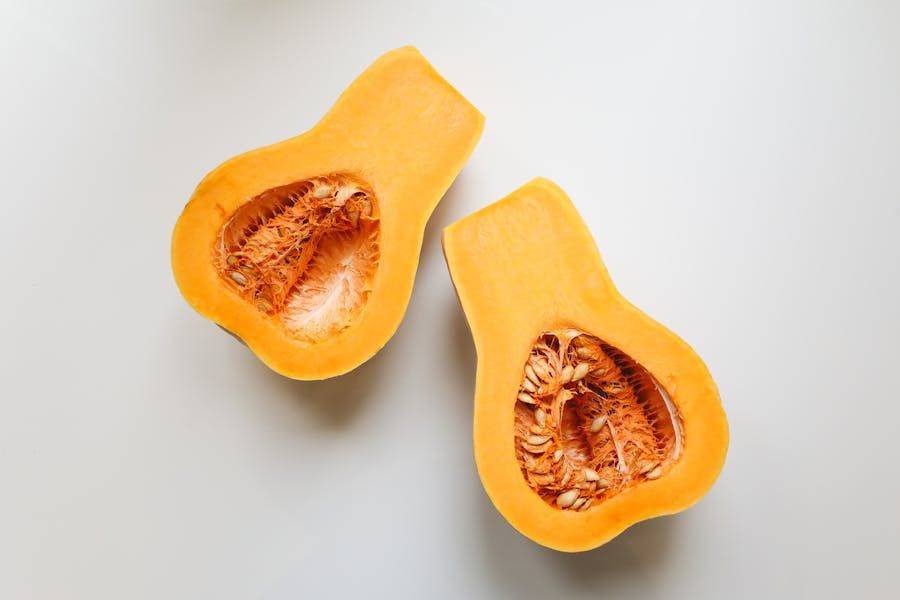Table of Contents
Canning serves as a traditional method for preserving the bounty of gardens and farms, enabling enthusiasts to savor the flavors of fresh produce year-round.

Yet, when it comes to preserving squash through canning, caution and restraint are advised by food safety experts.
The reasons for these advisories span from health risks to quality degradation, making canning an unsuitable preservation method for the squash.
This article provides an in-depth exploration into why canning squash is generally not recommended, elucidating the complexities behind each reason.
Density and Heat Penetration
Inconsistent Texture
Squash’s dense composition significantly hampers the capacity for even heat distribution during the canning process.
This inconsistency in heating can lead to portions of the squash within a jar not being adequately processed, thereby failing to achieve the sterility necessary for safe preservation.
The risk is not merely theoretical; it has practical implications for food safety, as uneven processing can allow for the survival of microorganisms that pose health risks.
Safety Concerns
The uneven heat penetration in dense foods like squash presents a tangible safety concern.
In canning, achieving uniform and sufficient internal temperatures throughout the entire contents of the jar is imperative to ensure the destruction of harmful pathogens.
The primary culprit among these is Clostridium botulinum, which produces the highly toxic botulinum toxin under anaerobic conditions prevalent in improperly processed canned goods.
This makes canning squash, with its challenging heat penetration, a risky endeavor, as there are no straightforward means to guarantee all parts of the jar have been safely sterilized.
Acidity Levels
pH Balance
Squash possesses a naturally low acidity level, categorizing it as a low-acid food.
For low-acid foods, the destruction of Clostridium botulinum spores requires processing at temperatures higher than boiling water (240°F or 115.5°C), achievable only through pressure canning.
However, even with pressure canning, the specific challenges of squash—namely, its density—make ensuring safe processing conditions more difficult.
Botulism Risk
The dual issue of low acidity and dense texture creates an environment conducive to the growth of botulism-causing bacteria if not properly canned.
Botulism, a potentially fatal illness, underscores the paramount importance of adhering strictly to scientifically validated canning practices, which for squash, are notably absent or extremely limited due to these inherent risks.
Quality and Texture
Compromised Texture Post-Canning
Canning typically subjects squash to prolonged exposure to high heat, which can drastically alter its texture.
The result often is an exceedingly soft, mushy product that bears little resemblance to the firm, crisp texture of fresh squash.
This significant degradation in texture detracts from the culinary appeal of canned squash, rendering it less versatile and enjoyable in dishes.
Flavor Alteration
Beyond texture, the flavor profile of squash can also suffer as a result of the canning process.
High heat can mute the vegetable’s subtle sweetness and freshness, leading to a bland or altered taste that fails to capture the essence of freshly harvested squash.
This flavor dilution is another factor contributing to the broader recommendation against canning squash.
Preservation Alternatives
Given the outlined concerns, alternative preservation methods are advocated for squash.
Freezing as a Preferred Method
Freezing stands out as a superior alternative for preserving the quality and safety of squash.
Blanched and frozen squash retains much of its texture and flavor, offering a more palatable and convenient option for long-term storage.
Freezing also circumvents the health risks associated with botulism in canned low-acid foods.
Drying Techniques

For those seeking shelf-stable options, drying squash offers another viable preservation method.
Dried squash, whether in slices or grated form, can be reconstituted in cooking or enjoyed as a snack, preserving a substantial amount of the nutritional content and flavor profile of the fresh vegetable.
Recipe Limitations
The absence of approved canning recipes further complicates the matter.
Lack of Approved Recipes
The dearth of scientifically tested and approved canning recipes for squash is a significant impediment.
Reliable recipes are crucial for ensuring safety and quality in canned goods, yet for squash, such resources are scarce or non-existent, reflecting the intrinsic difficulties in safely canning this vegetable.
Creativity Constraints
The canning process limits the culinary versatility of squash.
High heat not only affects texture and flavor but also diminishes the effectiveness of spices and herbs, limiting the scope for creative culinary uses of canned squash.
Safety Regulations
Adhering to established safety guidelines is crucial in home canning.
USDA Guidelines
The United States Department of Agriculture (USDA) and other food safety authorities provide stringent guidelines for canning, emphasizing methods that ensure the destruction of all pathogenic microorganisms.
For squash, the guidelines stop short of endorsing canning as a safe preservation method, reflecting ongoing concerns about the ability to achieve safe outcomes.
Importance of Following Recommendations
Following these recommendations is vital for safeguarding health.
The absence of clear, approved procedures for canning squash serves as a deterrent, steering home preservers towards safer alternatives such as freezing or drying.
Cost and Effort Considerations
The practicalities of canning squash also merit consideration.
Time Investment
The preparation and canning process for squash demands a considerable investment of time and effort, which, when juxtaposed with safety concerns and compromised quality, may not represent the best use of resources for many home canners.
Equipment and Expense
The requirement for specialized pressure canning equipment represents an additional barrier.
Given the limited applications for safely canning squash and the associated risks, the expense may outweigh the benefits for those not regularly engaged in preserving low-acid foods.
Nutritional Retention

Impact on Nutrients
The canning process involves exposing squash to high temperatures for an extended period, which can significantly impact the nutritional content of the vegetable.
Vitamins and antioxidants present in squash are susceptible to degradation when heated, leading to a reduction in the overall nutritional value of the canned product.
This is particularly true for water-soluble vitamins such as vitamin C and certain B vitamins, which are more vulnerable to heat.
In comparison, freezing squash preserves much of its original nutritional profile, as the quick-freezing process minimizes nutrient loss, making it a preferable method for retaining the health benefits of squash.
Considerations for Dietary Use
For individuals relying on home-preserved foods as a significant part of their diet, the method of preservation is an important consideration.
The diminished nutritional value of canned squash could be a drawback for those looking to maximize their intake of vitamins and minerals from preserved produce.
On the other hand, dried squash, while also experiencing some degree of nutrient loss during the drying process, can still retain a higher level of nutrients compared to canning, especially if dried at lower temperatures.
Drying offers a compromise between shelf stability and nutritional retention, making it an attractive option for health-conscious preservers.
Environmental Impact
Resource Consumption
The canning process for squash not only demands substantial time and effort but also consumes more resources.
Pressure canning requires a significant amount of water and energy to maintain the necessary temperatures for safe preservation.
Over time, this increased resource use contributes to a larger environmental footprint, especially when considered across multiple canning sessions.
Freezing squash, while also energy-intensive due to the need for prolonged freezer storage, generally uses less water.
However, the impact of freezer storage on energy consumption cannot be overlooked, making it important to weigh the environmental costs of each preservation method.
Packaging and Waste
Canning requires jars, lids, and bands, which, although reusable to some extent, eventually contribute to waste.
The metal lids, in particular, are recommended for single use when canning for safety reasons, adding to the waste generated from home preservation activities.
In contrast, freezing squash can utilize reusable containers, potentially reducing waste.
Dried squash presents an even more environmentally friendly option, as it can be stored in a variety of reusable containers without the need for energy-intensive refrigeration, making it arguably the most eco-conscious choice among the discussed preservation methods.
Conclusion
Considering the comprehensive analysis of the risks, challenges, and limitations associated with canning squash, the consensus against this practice is well-founded.
Alternatives such as freezing and drying not only offer safer, more reliable means for preserving squash but also better retain the vegetable’s inherent qualities.
For those passionate about preserving the bounty of their gardens, understanding and adhering to food safety guidelines is paramount, guiding them towards methods that ensure both the safety and enjoyment of their harvests.








